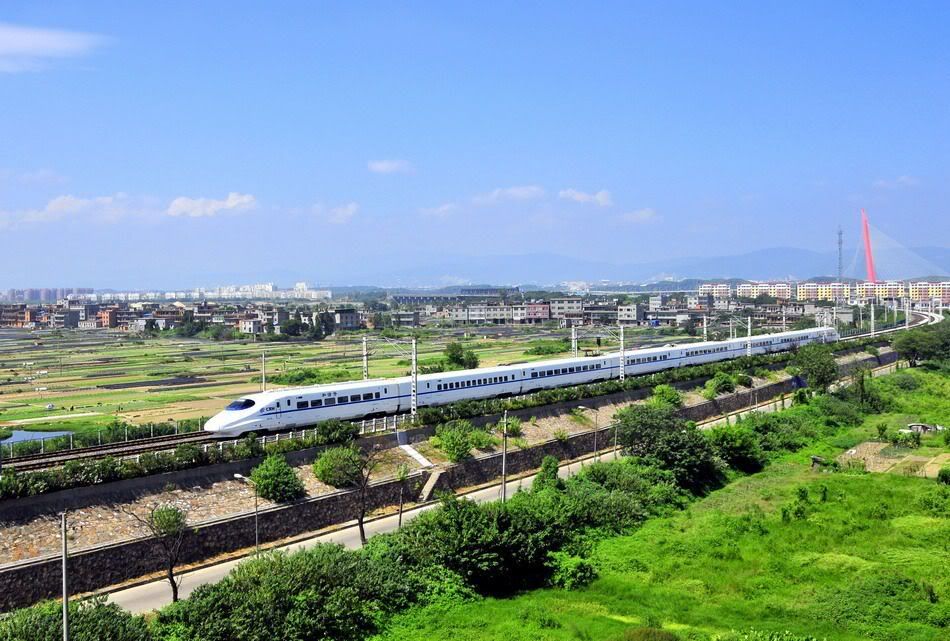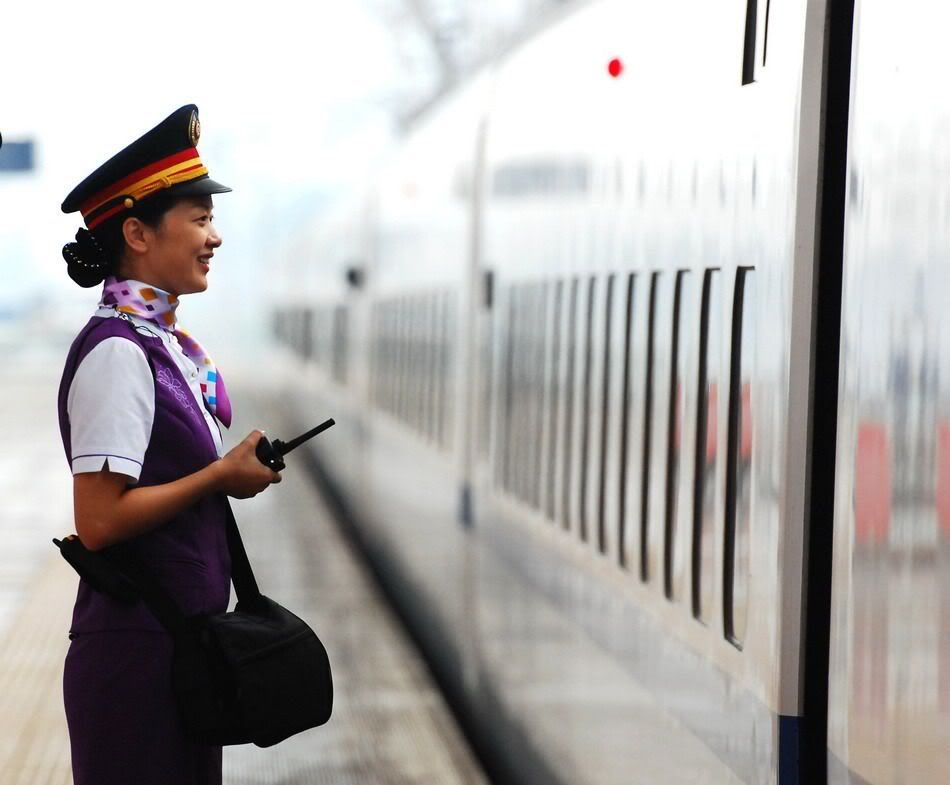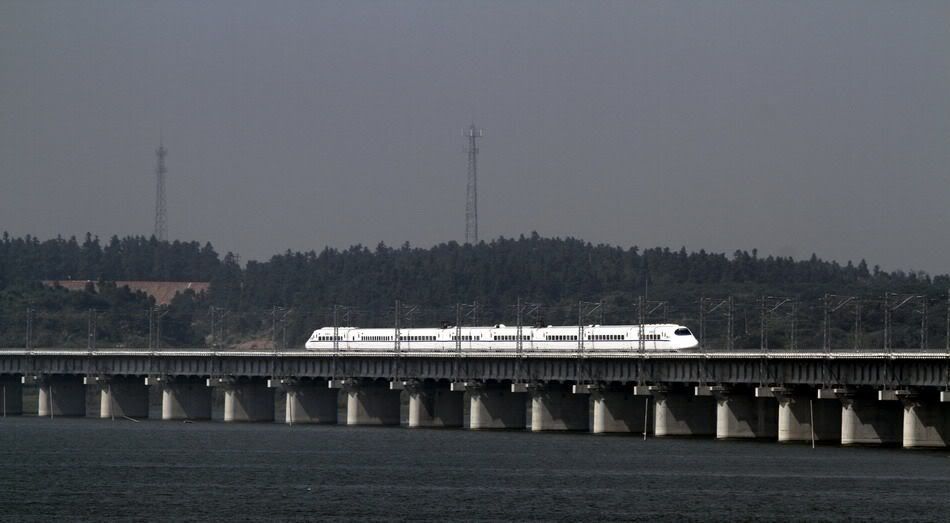Martian
Senior Member
BBC News - World's fastest train unveiled in China
China has the world's best proven technology for high-speed-rail (i.e. HSR) trains at the current world-record of 350 km per hour (see BBC news article below). China is also in the process of deploying her latest and even faster 380A trains that travel at 380 km per hour.
Your claim of 580 kph trains is not suitable for commercial use and therefore irrelevant in a comparison to commercially-operated HSR trains (see Wikipedia article below).
I remember watching a test of a specially-modified train for a super-speed test. One trick is to remove as much weight as possible (e.g. remove all seats, tables, handle bars, anything that is not bolted down and necessary, etc.) and also substitute with lighter materials (e.g. replace anything that is steel with aluminum if possible) beyond what is safely acceptable to commercial regulators.
Another trick is to install extra engines or batteries to generate far greater power. Once again, this is almost unacceptable in commercial use. There would be insufficient room to carry passengers.
A third trick/consequence is the replacement of the oil and wheels after the test. Neither the engine oil nor wheels were designed to handle excessive speeds. It is not practical to change the oil, wheels, and other parts after a short run of 580 kph. Commercial trains have to run multiple times a day and for long distances to carry passengers from city to city.
In conclusion, a publicity stunt for a 580 kph "specially-modified" train on a short-segment of rail is completely useless and unrelated to commercial HSR trains, which California is seeking.
"World's fastest train unveiled in China
Page last updated at 17:46 GMT, Thursday, 10 December 2009
As China's economy and population expand, so do its transport needs. Although car ownership is on the increase, the Government is investing more in the railways.
China now has the fastest train in the world. It runs from the central city of Wuhan down to the south coast, at a speed of more than 380km/h.
Jenny Wivell reports."
"A one time specially modified system and trainset record (see land speed record for railed vehicles) was set by the manned TGV's 574.8 km/h run. This run was for proof of concept and not for normal passenger service.
...
The maximum speed an unmodified train is capable of running was set by the non-wheeled 581 km/h JR-Maglev MLX01 run in 2003. However, even this is not necessarily suitable for passenger operation as there can be concerns such as noise, cost, deceleration time in an emergency, etc.
The Shanghai Maglev Train reaches 431 km/h during its daily service between Longyang Road and Pudong International Airport, holds the speed record of any commercial train services. Besides maglev, the fastest maximum operating speed (MOR) of any segment of any high speed rail line is currently 350 km/h (217 mph), a record held by multiple lines in China, first achieved by the Beijing–Tianjin Intercity Rail in August 2008. The trains have shown an unmodified capability of running 394 km/h in tests, and thus have been set to run 350 km/h in normal operation.[17]"
On the [other hand], if one wanted the very best and latest on offer, [wouldn't] the European [train makers] be better?. After all they've got a train that can reach a speed of 580kph. [That's] pretty much the cruising speed of most airlines, and if they can [tweak] it a bit more for speed, one could possibly get from SF to LA faster than a plane, from doorstep to doorstep.
China has the world's best proven technology for high-speed-rail (i.e. HSR) trains at the current world-record of 350 km per hour (see BBC news article below). China is also in the process of deploying her latest and even faster 380A trains that travel at 380 km per hour.
Your claim of 580 kph trains is not suitable for commercial use and therefore irrelevant in a comparison to commercially-operated HSR trains (see Wikipedia article below).
I remember watching a test of a specially-modified train for a super-speed test. One trick is to remove as much weight as possible (e.g. remove all seats, tables, handle bars, anything that is not bolted down and necessary, etc.) and also substitute with lighter materials (e.g. replace anything that is steel with aluminum if possible) beyond what is safely acceptable to commercial regulators.
Another trick is to install extra engines or batteries to generate far greater power. Once again, this is almost unacceptable in commercial use. There would be insufficient room to carry passengers.
A third trick/consequence is the replacement of the oil and wheels after the test. Neither the engine oil nor wheels were designed to handle excessive speeds. It is not practical to change the oil, wheels, and other parts after a short run of 580 kph. Commercial trains have to run multiple times a day and for long distances to carry passengers from city to city.
In conclusion, a publicity stunt for a 580 kph "specially-modified" train on a short-segment of rail is completely useless and unrelated to commercial HSR trains, which California is seeking.
"World's fastest train unveiled in China
Page last updated at 17:46 GMT, Thursday, 10 December 2009
As China's economy and population expand, so do its transport needs. Although car ownership is on the increase, the Government is investing more in the railways.
China now has the fastest train in the world. It runs from the central city of Wuhan down to the south coast, at a speed of more than 380km/h.
Jenny Wivell reports."
"A one time specially modified system and trainset record (see land speed record for railed vehicles) was set by the manned TGV's 574.8 km/h run. This run was for proof of concept and not for normal passenger service.
...
The maximum speed an unmodified train is capable of running was set by the non-wheeled 581 km/h JR-Maglev MLX01 run in 2003. However, even this is not necessarily suitable for passenger operation as there can be concerns such as noise, cost, deceleration time in an emergency, etc.
The Shanghai Maglev Train reaches 431 km/h during its daily service between Longyang Road and Pudong International Airport, holds the speed record of any commercial train services. Besides maglev, the fastest maximum operating speed (MOR) of any segment of any high speed rail line is currently 350 km/h (217 mph), a record held by multiple lines in China, first achieved by the Beijing–Tianjin Intercity Rail in August 2008. The trains have shown an unmodified capability of running 394 km/h in tests, and thus have been set to run 350 km/h in normal operation.[17]"
Last edited:










